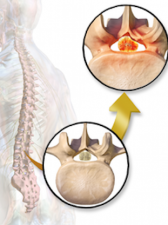 David Wright, the captain and offensive force of the New York Mets, returned to baseball Monday night after a three-month hiatus due to a spinal condition. His first plate appearance seemed to indicate that his battle with spinal stenosis has been won: he hammered a long home run against the Phillies into the second deck of Citizens Bank Park in Philadelphia.
David Wright, the captain and offensive force of the New York Mets, returned to baseball Monday night after a three-month hiatus due to a spinal condition. His first plate appearance seemed to indicate that his battle with spinal stenosis has been won: he hammered a long home run against the Phillies into the second deck of Citizens Bank Park in Philadelphia.
Wright, the team's third baseman for over a decade, has been plagued throughout his career by a variety of injuries, some nagging, some more serious. Among the most serious is the spinal condition spinal stenosis. This usually chronic problem is caused by bone or ligament (disc) overgrowth or slippage, which compresses the central foramen (cavity) of the spine, causing stiffness or pain on standing or walking.
Wright was sidelined in April due to a hamstring muscle problem, but upon resuming exercises to get him in playing shape, back pain developed and in late May he was put on the disabled list for that problem. Tests, including an MRI and CT scan revealed the surprising condition: spinal stenosis. This usually occurs in those over 50 who have pre-existent arthritic or spinal disc problems. It can cause pressure on the spinal cord itself, if the origin is in the cervical spine (neck), but more commonly it causes a sciatica-like pain and discomfort arising from pressure on the nerve roots in the lumbar region, which Wright was suffering from.
Treatment involves physical therapy and anti-inflammatory pain-relievers, but if those measures don't alleviate the pain sufficiently, complex spinal surgery is necessary to relieve the nerve root pressure. Such surgery, while most often successful, is fraught with potential complications and would certainly have shelved Wright for this season, and may well have ended his baseball career.
So all of us Mets fans heaved a huge sigh of relief when Wright re-joined the team, and we can be forgiven for exulting over his success hitting: he had several more hits after his initial dramatic homer.

Coincidentally, a new report published in the Annals of Internal Medicine showed that the simplest and safest treatment for low-back pain local injections of corticosteroids fail to give long-term benefit, although some short-term improvement is often seen.
The study was in the form of a meta-analysis: a collection and homogenization of the results of many other studies to make a coherent conclusion. This type of analysis is susceptible to all sorts of caveats, mainly that the totality depends on the reliability of each of the studies chosen to be included.
Entitled Epidural Corticosteroid Injections for Radiculopathy and Spinal Stenosis, the authors came from the Oregon Health & Science University, Portland, Oregon and the University of Washington, Seattle, Washington. Their goal was to determine if local injections of steroid plus anesthetic did any real good for sufferers of low-back pain, a very common complaint, if the cause was either nerve-root pressure (sciatica, or radiculopathy), or spinal stenosis, such as that found to be Wright's problem.
They selected randomized trials of epidural corticosteroid injections versus placebo interventions, or trials which compared epidural injection techniques, corticosteroids, or doses. Thirty placebo-controlled trials evaluated epidural corticosteroid injections for radiculopathy, and eight trials were done for spinal stenosis.
The results were somewhat disappointing: There were no clear effects of epidural corticosteroid injections for spinal stenosis. Serious harms were rare. For radiculopathy, epidural corticosteroids were associated with greater immediate-term reduction in pain, function, and short-term surgery risk. Effects were below predefined minimum clinically important difference thresholds, and there were no longer-term benefits.
The authors concluded that "epidural corticosteroid injections for radiculopathy were associated with immediate reductions in pain and function. However, benefits were small and not sustained, and there was no effect on long-term surgery risk. Limited evidence suggested no effectiveness for spinal stenosis."
My recommendation: if you have spinal stenosis, try to get an appointment with whoever took care of David Wright.


